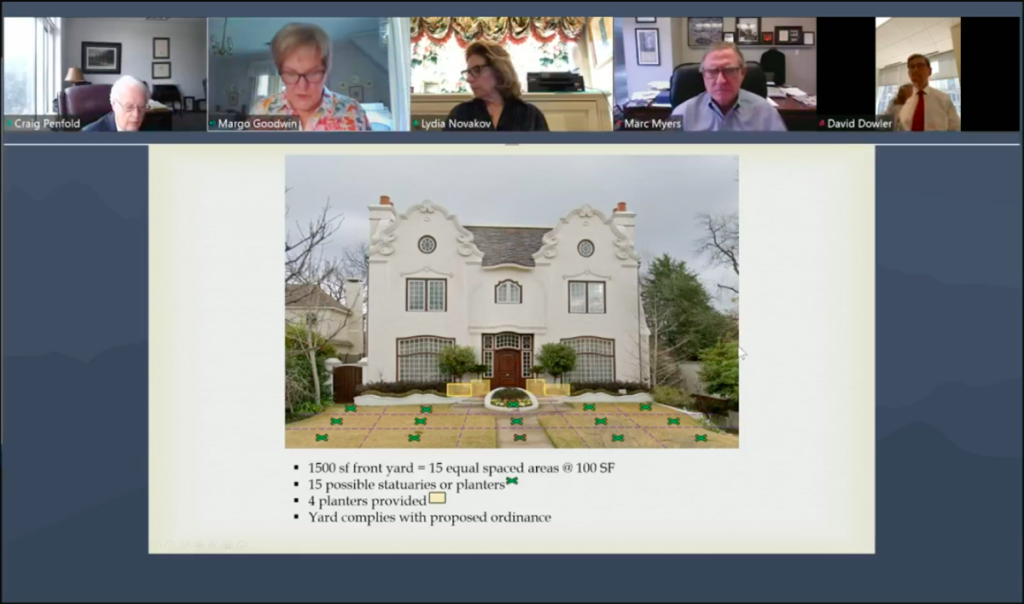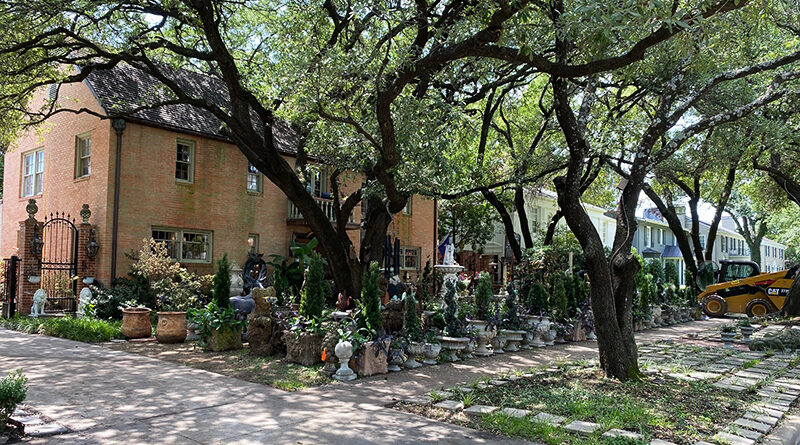How Many Are Too Many?
Highland Park ordinance limits number of yard decorations
Good news for Highland Park residents who like to go all out for Christmas: The town’s new standards for yard decorations don’t apply to temporary ones displayed for holidays.
A new town ordinance limits the number of decorative items placed in front and visible side areas of residential homes. Specifically, decorations like statues, sculptures, pots, planters, etc., must be 5% or less of the yard area.
Highland Park director of town services Hugh Pender confirmed the town has contacted the owner of a home in the 4500 block of Beverly Drive about noncompliance.
“We are still early in the notification process, so no resolution just yet,” he said.
No roadway-visible front or side yard can have more than one statue/sculpture, topiary, pot, planter, or container per 100 square feet of yard area. Topiaries, pots, planters, and other free-standing landscape containers must also have year-round living vegetation. Architectural features or extensions of homes are exempt.
I think we’ve got good tools in place to work with residents to both have an attractive landscape and be courteous to your neighbors.
Hugh Pender

“While the term ‘decorations’ is used to generalize the new ordinance, it is intended to regulate more permanent items such as statuaries, topiaries, pots, planters, and other landscape receptacles,” Pender said. “This ordinance is not intended to regulate temporary decorations placed for any celebratory purposes.”
The ordinance exempts explicitly holiday decorations up between Nov. 15 and Jan. 6, but Pender said decorations for other holidays, including Halloween, are safe, too.
“The Town felt that it sees more statuaries, topiaries, pots, and planters placed temporarily during this time of year than other holidays such as those you mention,” he said.
Pender showed photos to demonstrate the ordinance requirements and answered questions about the proposed regulations during a town council work session before the ordinance passed in August.
“I think the first step is to put something in place,” Pender said. “I think we’ve got good tools in place to work with residents to both have an attractive landscape and be courteous to your neighbors.”
He said the ordinance works in both a “proactive” and “reactive” way, meaning town inspectors can address the issue with residents if they see a home not in compliance, and neighbors can also inform the town.
Residents not in compliance with the ordinance would be notified either by phone or mail, and residents not in compliance could face a fine if they don’t come up with a resolution with town officials.









